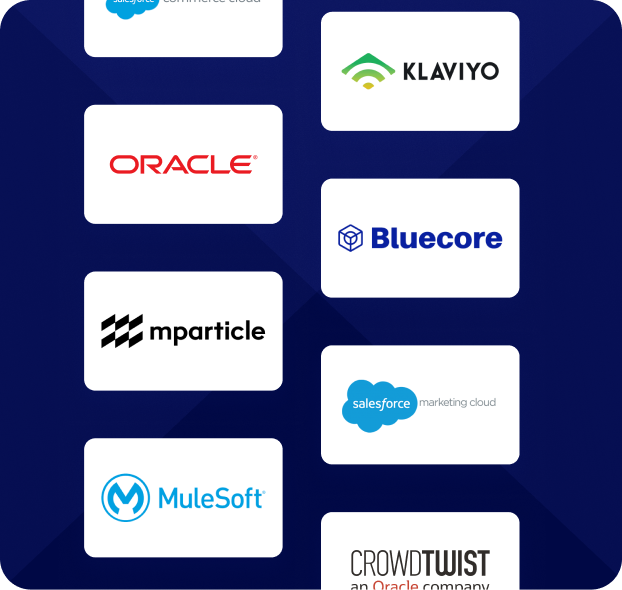The Growth of Video Marketing: More Important Than Ever in 2017
How much video marketing is your brand doing right now?
If the answer is zero, well it’s time to start. Because if you don’t, then you’re going to be missing out on one of the biggest marketing trends set to skyrocket in 2017.
In fact, according to Entrepreneur, by 2019 80 percent of online content will be video. That’s a pretty incredible stat. So, it shouldn’t go unnoticed.
But, you might be asking, since when has video become such a big thing? After all, there’s still no shortage of written content and social media being produced.
Great question. And in this post, we’re going to cover why video marketing has been such a big growth engine over the last year or two, and why it’s set to be the biggest distribution channel marketers can use in the coming year.
Let’s get started.
Time Spent Online
It shouldn’t come as a big surprise that the amount of time people are spending online has grown quite a bit over the years. Now, with the advent of smartphones and tablets, plus the extreme growth of streaming sites like Netflix and Hulu, more and more people are watching online content than ever before.
When you look at the numbers, you can really see just how much of this breakdown leans towards video. Take a look at this graph from eMarketer:
Now, the average user is spending just shy of 2 hours per day watching video online. While every medium has seen growth since 2011, none have grown as much as digital video. It beats social networks, digital radio, and even Facebook.
This is great news for marketers who are looking to find new channels to reach their customers that make a big impact and aren’t incredibly expensive.
And, more and more sites are incorporating video within them. Look at the social media sites. Facebook, Twitter, and Instagram all feature video options on their sites. Twitter has spent much of the fall of 2016 experimenting with live streaming events from Thursday night NFL games to news.
Then, of course, there is the massive growth of Snapchat. With 10 billion video views each day by users, it has helped revolutionize video content for consumers. It’s about time brands have decided to follow along.
Video content, especially on social media channels like Instagram and Snapchat has provided marketers with an amazing way to reach their consumers. Video feels much more personal to potential consumers on these channels. Thus video content on social media can have a much higher level of engagement than other types of marketing.
The Rise of YouTube
The growth of YouTube has helped push the dramatic rise of video content as well. Just take a look at some of these incredible YouTube statistics:
- YouTube has over a billion users
- On mobile, the average viewing session is now more than 40 minutes.
- More than half of YouTube views come from mobile devices.
- YouTube overall, and even YouTube on mobile alone, reaches more 18-34 and 18-49 year-olds than any cable network in the U.S.
Currently, the only channel that sees more daily hits than YouTube is Google. In fact, YouTube is also the #2 search engine in the world.
Right now, YouTube has been projected to see approximately 500 hours of content being uploaded to the site each minute. A massive growth from 2007 when the site launched and saw an average of 6 hours of content uploaded per minute.
Unsurprisingly, because YouTube has been such a growth channel, both brands and individual people have been able to benefit from it. Just this month, YouTube star Casey Neistat announced that his video app Beme had been acquired by CNN and he would begin to make content for them.
Marketers are Taking Notice
In Hubspot’s recently released State of Inbound 2016 report, video was set to play a large part of the strategy plan for brands and marketers in 2017.
When asked: What content distribution channels do you plan to add to your marketing efforts in the next 12 months?
This was the breakdown of the responses:
- 48% YouTube
- 39% Facebook video
- 33% Instagram
- 20% Messaging apps
- 15% Podcasts
- 13% Snapchat
Notice a trend there? Beyond the heavy social media presence here, every single one of these distribution channels have a large (or solely) video component with the exception of podcasting.
The majority of marketers are looking to add channels that support video in their marketing efforts in 2017.
Of course, there’s a reason why marketers are starting to love video, because video provides results.
Check out this infographic from Hubspot:
The conversion rates on video are incredible. Users are more likely to buy products online, call vendors, visit marketer’s websites, boost engagement, and increase click-through rates.
The important thing to note about video marketing is that now because it’s everywhere, it’s not limited to just the ‘big’ brands. Small and local businesses can and should get into video marketing because they can dramatically increase traffic and conversions with something as simple as a 2-minute video shot from a smart phone. Massive amounts of technical knowledge or equipment aren’t needed.
Final Thoughts
It’s easy to see why video is getting huge. The real question is, what is your brand going to do to jump into it? Right now is the best time to do it, because any brands that aren’t already jumping on the video marketing bandwagon now are only going to be left behind in the next year.
Is your brand already seeing success with video marketing? Let us know in the comments!
Starbuck’s Omni-Channel Approach to Holiday Marketing
Well, it’s that time of year. The holiday season is upon us and there’s no doubt you’ve been getting emails from brands that are hoping you’ll spend your hard earned cash with them.
But what about other channels? After all, there is a lot more potential out there to reach customers if your brand is using a multi-channel marketing approach.
Right now, approximately 90% of brands are on multiple social media channels as you can see in this chart:
The stats prove that reaching customers on multiple channels is paying off.
The 2016 Black Friday was record breaking, not only in terms of overall sales ($3 billion) but also the number of sales from mobile devices ($1 billion). The same was true for Cyber Monday as well, with sales up 12% from 2015, hitting approximately $3.4 billion dollars.
According to CMO.com, the types of devices consumers used to shop through the month of November expanded as well:
- Desktop Share of Sales: 69%
- Mobile Share of Sales: 31%
- Smartphone Share of Sales: 22%
- Tablet Share of Sales: 9%
In this post, we’re going to follow one brand that has been able to reach customers through a number of marketing platforms during the holiday season of the years, Starbucks. Hopefully, you’ll be able to take a few tips that you can apply to your own marketing plans.
So away we go!
Starbucks Case Study: Red Cups
Starbucks is one brand that tries to get users involved over a number of different channels during the holiday season. In 2016, it was the 19th year of Starbucks bringing back it’s Red Cups for the holidays.
They’ve managed to not only make the Red Cups an event in the mind of their most loyal customers, but they also have been able to use the announcement to drive engagement as well.
Twitter
Starbucks goes all in with their social media channels when it comes to the Red Cups. They make sure to include tons of gifs and images in anything that’s posted. You can see their Red Cups all over their channels and they’ve even got a little red cup emoji on Twitter too.
We crafted coffee. You made it art. Cups warm a hand, beauty warms the heart. #RedCups pic.twitter.com/3QmdvoNM0S
— Starbucks Coffee (@Starbucks) November 10, 2016
Here, Starbucks not only promotes the Red Cups but they also tell a story that involves their actual customers. The video highlights how Starbucks makes the cups, but it’s really the customers who turn them into something really special.
Contest
Customers can share on Twitter and Instagram any images that feature the Red Cups (with the hashtag #RedCupsContest) and be in the running to win a gift card.
Starbucks also makes sure to highlight their customers in their posts as well, doing lots of re-gramming and re-tweeting with anyone who uses their hashtags.
Starbucks consumers seem to really enjoy sharing their #RedCupContest posts with both the brand and other users too.
Here are just a few of the over 40,000 images that have been tagged #RedCupContest on Instagram.
Facebook
Starbucks makes sure to also let consumers know when Red Cups are live. Come mid-November, all of the branding around Starbucks immediately changes to highlight the Red Cups. It’s a really good idea to do that for a couple of reasons, namely it helps build excitement and trigger those holiday feelings (which are generally positive with people).
In this Facebook post, Starbucks simply updated their cover photo to highlight the new Red Cups.
This post alone got over 5,600 shares, 3,300 comments and over 98,000 (!) reactions.
Snapchat
Starbucks hasn’t stopped at promoting their Red Cups just on the main social media sites, they’ve also created a Red Cups themed filter for Snapchat too.
This filter coincided with the official launch of the Red Cups, so it was only a one day filter. During the holiday season, Starbucks plans to release additional filters as well.
Website
Just because Starbucks has a big focus on their social media channels in promoting their product via the Red Cups, that doesn’t mean that they aren’t also focusing on their website as well.
When the Red Cups event was launched, Starbucks offered a special deal for customers that they could save on their calendar.
Ecommerce
The eCommerce side of the Starbucks website also makes sure to highlight Red Cups also. Consumers who love the Red Cups can buy Red Cup Christmas tree lights and ornaments, Red Cup mugs, and Red Cup themed gift sets:
App Messaging
Finally, those customers who use the Starbucks app are also frequently alerted when new events, drinks, and app features arrive.
They are also sure to provide users with a gentle reminder that they can buy holiday gifts right from their app too.
Final Thoughts
Clearly, Starbucks has their holiday marketing down pat. And, even with the increase in new channels over the last few years such as Snapchat and the app, Starbucks has been able to do a full-scale promotion around their Red Cup event. They’ve been able to promote in a way that goes beyond just getting people to come into the stores in person, but to also shop online and via their app.
How is your brand approaching multi-channel marketing this holiday season?
The State of Marketing Technology
Let’s face it, technology is pretty awesome. Without it, we wouldn’t have iPhones, Tesla cars or Domino’s Pizza chatbots.
So, it shouldn’t be a surprise that new technology is changing the face of marketing and how brands operate. In fact, there is an entire industry around it this marriage between traditional marketing and a new technology called Martech (because everyone loves a snappy name).
Chances are if you’re in any sort of marketing today you’re already involved with and using Martech on a consistent basis.
What is Martech?
Still not sure exactly what MarTech is, don’t worry, we’ve got you covered.
Here is the official definition from MartechToday:
Martech is the blending of marketing and technology. Virtually anyone involved with digital marketing is dealing with martech, since digital by its very nature is technologically-based. The term “martech” especially applies to major initiatives, efforts and tools that harness technology to achieve marketing goals and objectives.
Primarily Martech is all about tools and there are thousands of them, literally.
The Explosion of Marketing Tools
These tools run the gamut from content marketing to sales automation to interactive advertising to social media management. Basically, everything most marketers use today to run their business. Tools that many of us would be lost without.
Pretty incredible since the vast majority of the common Martech tools we all use have mostly all been around for about 5 years or less.
Take a look at this graphic from Cheifmartech, it shows over 3,500 different tools in the marketing technology landscape. The incredible thing is, this chart is only as of March 2016, so no doubt there are dozens (if not hundreds) more tools now.
Now, look at the evolution of marketing technology from just the past 5 years until now:
There is no doubt you’re using at least a handful of these tools in your own personal lives. What’s really fascinating, though, is how Martech is being accepted and used on the brand side of things.
The State of Marketing Technology
In a recently released study, Walker Sands Communications teamed up with Cheifmartech.com’s Scott Brinker to really dig into where Martech stands today. The report is called The State of Marketing Technology in 2017.
While this is only the second year the report has been released, it does give us a nice insight into how marketers and brands are dealing with Martech, respectively.
In the rest of this post, we’re going to take an in-depth look at the findings of the study. Hopefully, after reading this you’ll have a very good idea of what the outlook for Martech over the coming year, and learn some of the biggest roadblocks that you might be seeing in your company.
Playing Catchup
One of the biggest frustrations cited in last year’s report was the feeling of lag between the marketing technology that individual marketers were using in their personal lives and the brands they worked with.
There’s no doubt that many of today’s marketers are tech-savvy and quite a few are early adopters of the newest tools and resources, so many were increasingly frustrated when their brands weren’t on the same page.
Many marketers felt that by lagging behind in tech, the brand was losing out on potential increases efficiency, content, and even revenue by not embracing new tools.
The numbers back it up, in 2015, only 20% of marketers called their companies innovators or early adopters in marketing technology innovation.
The good news is the lag seems to be turning around. This year, that number rose to 48%, so a pretty dramatic increase, which is good news for the Martech industry as a whole.
The Shift in Marketing Stacks
This year’s report also noted two interesting tidbits about marketing stacks.
The first goes to show just how technologically advanced marketing has become, as in the words of Scott Brinker, “Martech becoming democratized, not centralized.” That means that these marketing stacks (tools) are no longer primarily under the purview of the IT department, who in the past typically managed an all-in-one marketing solution as part of the tech side of the business.
Now, marketing managers and departments are taking control of Martech stacks, and that also includes making the purchasing decisions as well.
The second interesting piece of information is that marketers are turning to ‘best of breed’ marketing technology stacks, meaning the best system or tool in a specific niche.
Rather than using full all-in-one marketing solutions, companies and marketers are finding better success by mixing and matching their chosen best of breed tools and integrating them all together to form a bespoke marketing system.
As more and more tools emerge over the coming years, it will be interesting to see if the best of breed integration path continues to grow or shrinks because companies may be faced with too many choices.
Strategy
Right now, the majority of brands are using between two and five tools in their marketing technology stacks.
So, it shouldn’t be all that surprising that the biggest sticking point for many marketers is finding the right strategy. In fact, in the report, 39% of marketers cited having a better marketing strategy as key to fully leveraging their Martech stack.
What is encouraging about this number is it highlights just how far Martech has come in being seen as vital tools for brands and marketers. Now, their focus is on how they can best effectively use all of the various tools at their fingertips for the best path to success.
Final Thoughts
It is safe to say that brands and marketers are embracing Martech on a large scale level and are using everything marketing technology has to offer to improve their reach and offer a better experience to consumers.





